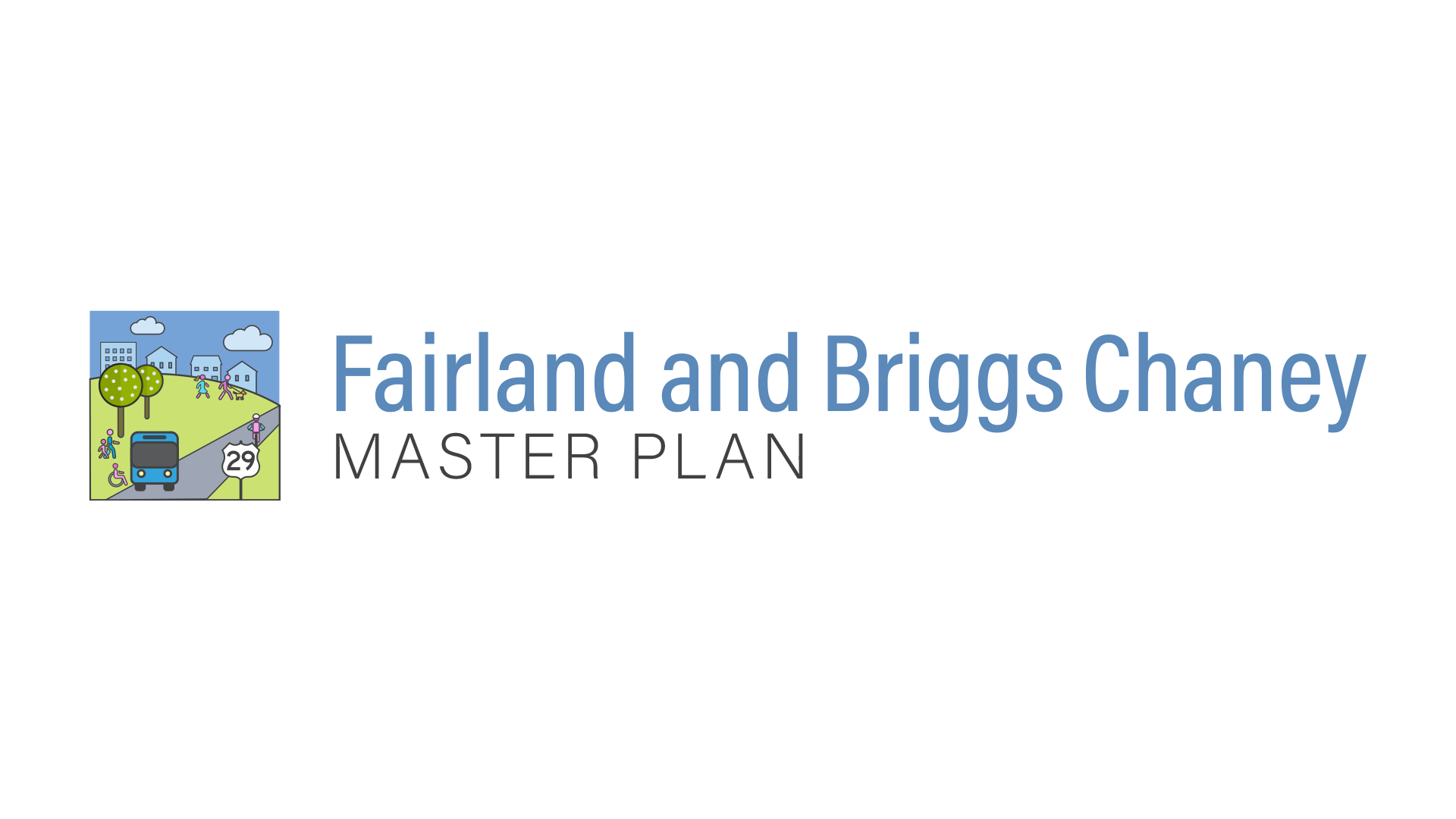
Planning Board approves focus on equity and a reimagining of the Route 29 Corridor
WHEATON, MD – The Montgomery County Planning Department, part of The Maryland-National Capital Park and Planning Commission (M-NCPPC), presented the Fairland and Briggs Chaney Master Plan Scope of Work to the Montgomery County Planning Board during their April 8 meeting. At the meeting, Planning staff outlined an approach to focus on equity and a reimagining of the Route 29 Corridor, which runs through the east side of Montgomery County. This plan will serve as an update to a portion of the 1997 Fairland Master Plan and will be the first time in over 20 years since a comprehensive master plan has been developed for this community.
View the Fairland and Briggs Chaney Scope of Work staff report.
View the Fairland and Briggs Chaney Scope of Work presentation.
Watch the virtual Planning Board meeting.
While the 1997 Fairland Master Plan achieved many of its goals, including the delivery of public sector capital improvements such as parks, recreation, and road improvements, challenges still persist in the community. These include insufficient job creation, lack of connectedness, and poor urban design. Planning staff intend to address these issues as well as increase the supply of the area’s affordable and attainable housing as part of the Fairland and Briggs Chaney Master Plan.
“We must create a more equitable and just Fairland community,” said Planning Director Gwen Wright. “We are eager to take on this important work, which will be our first major corridor plan specifically highlighting equity and social justice following the framework established by the Thrive Montgomery 2050 General Plan Update.”
The Fairland and Briggs Chaney Master Plan area contains a diverse population of about 36,800 residents and has one of the highest concentrations of Black residents in Montgomery County. Planning staff have identified Fairland and Briggs Chaney as one of the county’s most important Equity Focus Areas as well as a crucial area for the implementation of Montgomery Planning’s Equity Agenda for Planning. This Equity Agenda was officially established following the county’s newly adopted Racial Equity and Social Justice Act, which mandates the Planning Board to consider racial equity and social justice when preparing master plans.
The plan will also consider the impacts of two major transportation projects that were completed after the adoption of the 1997 Fairland Master Plan—MD 200, Maryland’s first all-electronic toll road, and Montgomery County’s first Bus Rapid Transit (BRT) service. The master plan must be updated to tackle the challenges commuters currently face as well as address the area’s evolving realities, historic inequities, and future outcomes. It also must coincide with the recommendations in the upcoming Corridor Forward: The I-270 Transit Plan, which will prioritize transit opportunities, including BRT service along MD 355, that best satisfy the county’s strategic environmental, racial equity, and economic development goals.
To ensure that the master plan is strongly rooted in the community’s identity and core values, Planning staff will implement an inclusive Fairland and Briggs Chaney Master Plan engagement strategy over the two-year planning process. This will be carried out in four phases—Listening, Visioning, Refining, and Sharing—to involve the community during all critical stages of the project.
Sign up for the Fairland and Briggs Chaney eLetter
Montgomery Planning will kick off the first Fairland and Briggs Chaney Master Plan community event with a virtual speaker series to be held later this spring. This will be the first series Montgomery Planning has used to promote and highlight an active master plan. The three sessions of this series will serve as the inspiration for other community events within the Fairland and Briggs Chaney plan area.
About the Fairland and Briggs Chaney Master Plan
The Fairland and Briggs Chaney Master Plan is an update to a portion of the 1997 Fairland Master Plan and will establish a clear vision for an equitable, just, and prosperous future for the Fairland community, mirroring the county’s long-term priorities, which include a vibrant economy, equity for all residents, and a healthy environment. The master plan boundary consists primarily of property and communities of Fairland and Briggs Chaney along the US 29 Corridor from near Paint Branch on the south to Greencastle Road on the north. The update will examine and provide policies and recommendations on existing and future land uses and zoning, housing inventory and needs, transportation systems, historic preservation opportunities, area park facilities, and the environment. This master plan will take cues from the equity framework in the update to the county’s General Plan, Thrive Montgomery 2050, which describes how places with equitable access to opportunity produce strong, successful communities.
About the Equity Agenda for Planning
Montgomery Planning recognizes and acknowledges the role that our plans and policies have played in creating and perpetuating racial inequity in Montgomery County. We are committed to transforming the way we work as we seek to address, mitigate, and eliminate inequities from the past and develop planning solutions to create equitable communities in the future. While it will take time to fully develop a new methodology for equity in the planning process, we cannot delay applying an equity lens to our work. Efforts to date include:
- Developing an Equity Agenda for Planning. The Planning Board approved Equity in Master Planning Framework, and staff is working on action items.
- Prioritizing equity in Thrive Montgomery 2050. Community Equity is one of the three priority areas of our county General Plan update, Thrive Montgomery 2050.
- Focusing on equity in upcoming plans. Equity is a central focus of the Silver Spring Downtown and Adjacent Communities Plan, the first master plan to launch since Montgomery County’s Racial Equity & Social Justice Act passed. All upcoming plans and studies will have an equity focus.
- Viewing management and operations through an equity lens. Our efforts are not limited to the master planning process. Management and operational functions like communications and human resources are developing approaches, tools, plans, and training to ensure that we look at everything through an equity lens.